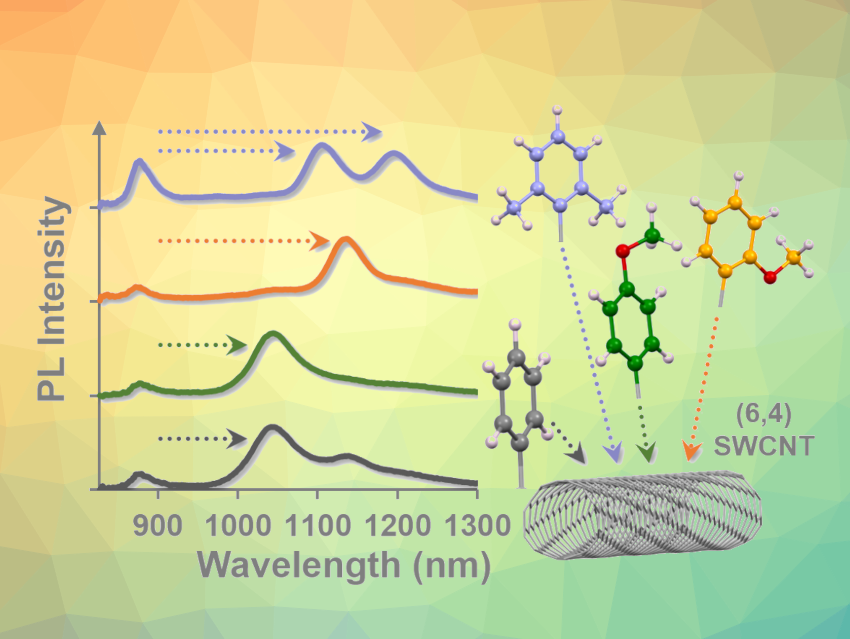Single-walled carbon nanotubes (SWCNTs) are carbon allotropes that can be considered “graphene rolls”. They can have useful properties such as photoluminescence, which may be controlled by chemical functionalization. The photoluminescence wavelengths, for example, seem to be affected by the steric bulk of substituents at the nanotubes’ surface.
Yutaka Maeda, Tokyo Gakugei University, Japan, Pei Zhao, Masahiro Ehara, Institute for Molecular Science, Okazaki, Japan, and colleagues have developed an approach to control the photoluminescence (PL) properties of (6,5)-chirality enriched single-walled carbon nanotubes by introducing different aryl substituents. The nanotubes were reductively arylated using sodium naphthalenide and monosubstituted and disubstituted iodobenzene derivatives to introduce groups with different amounts of steric bulk.
The team found that the functionalization can be used to control the photoluminescence wavelengths and intensity. In particular, the substituent positions and the size of alkyl groups at the aryl units had significant impacts. Certain peaks in the photoluminescence spectrum appeared, for example, selectively for groups such as 3,5-dimethyl phenyl units or 2,6-dimethylphenyl units. The wavelength ranges of the peaks can be finely adjusted based on the type and position of the substituents. Overall, the work provides insight into the control of photoluminescence characteristics of SWCNTs, which could increase their value as optical materials and increase the scope of their practical applications.
- Switching Photoluminescence Wavelength of Arylated Single‐walled Carbon Nanotubes by Utilizing Steric Hindrance in Reductive Arylation,
Yutaka Maeda, Yui Iguchi, Pei Zhao, Atsushi Suwa, Yasunari Taki, Kentaro Kawada, Michio Yamada, Masahiro Ehara, Masahiro Kako,
Chem. Eur. J. 2025.
https://doi.org/10.1002/chem.202404529





Interesting work in a highly competitive field.